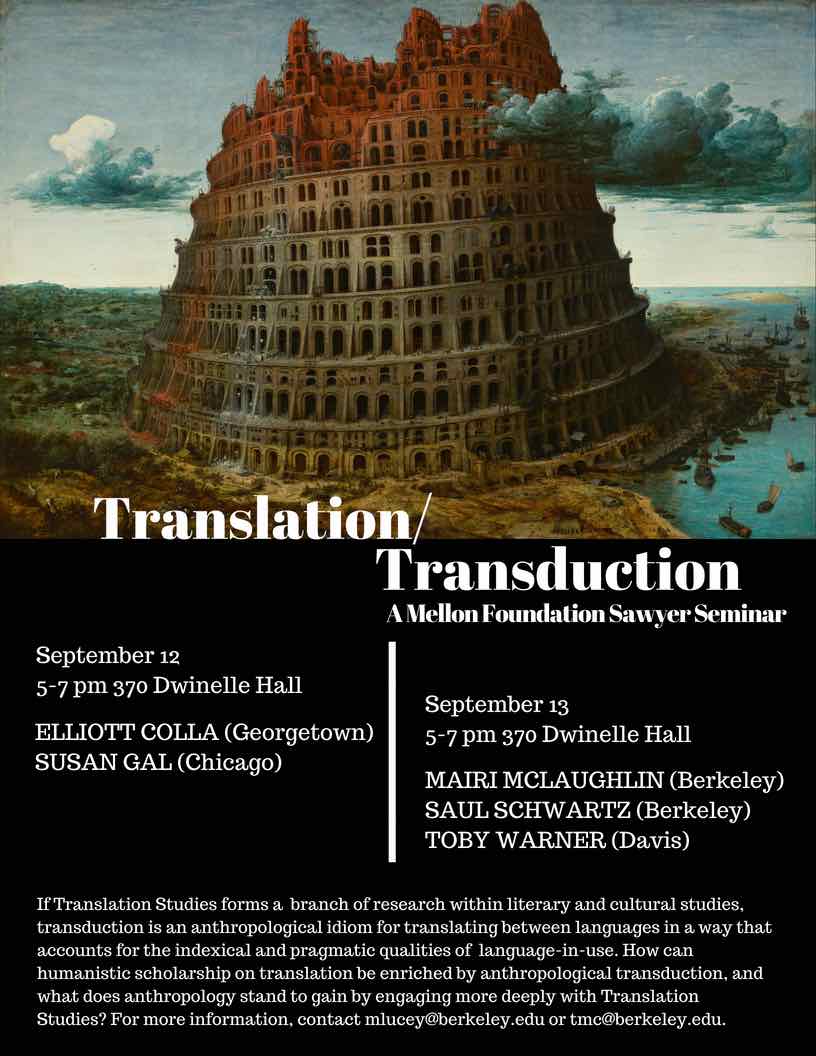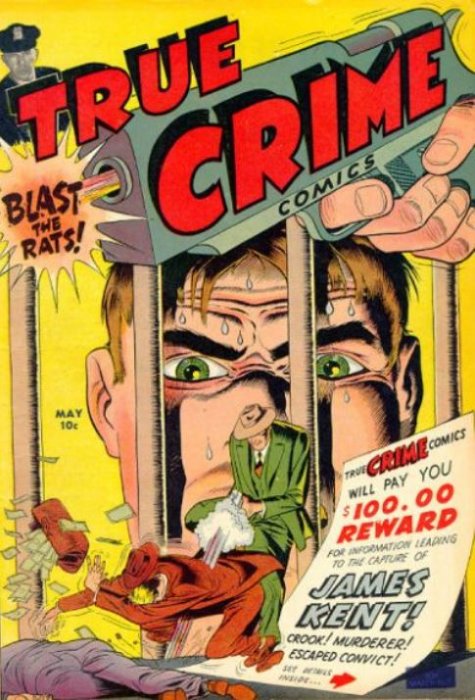 Brett Kavanaugh threatened us with the revenge of a (presumably apocalyptic) whirlwind yesterday if–what? If we don’t believe him? In an effort to dispel that mini dust storm in advance, we scoured the Reps archive today for essays that might help clear the air. The special forum “Crime, Lies, and Narratives,” from shortly after 9/11 (another great time of national name-calling and angst), offers three such essays, perfect for weekend reading:
Brett Kavanaugh threatened us with the revenge of a (presumably apocalyptic) whirlwind yesterday if–what? If we don’t believe him? In an effort to dispel that mini dust storm in advance, we scoured the Reps archive today for essays that might help clear the air. The special forum “Crime, Lies, and Narratives,” from shortly after 9/11 (another great time of national name-calling and angst), offers three such essays, perfect for weekend reading:
Monthly Archives: September 2018
Game Theory Meets Marriage Plot
Austen Equilibrium
by Trisha Urmi Banerjee
The essay begins:
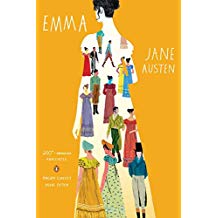 It is at least ironic that the characters and narration of Jane Austen’s Emma articulate excessively their preference for verbal and temporal economy. Clever Emma, who admires Mr. Martin’s proposal letter to Harriet for being “strong and concise; not diffuse,” observes later that charades “in general cannot be too short.” And at the end of dinner at Randalls, “while the others were variously urging and recommending, Mr. Knightley and Emma settled it in a few brief sentences” (122). It might surprise us that at the novel’s turning point, “a few minutes were sufficient for making [Emma] acquainted with her heart” (382), were it not the case that by this time, we have already heard the phrase “half a minute” ten times.
It is at least ironic that the characters and narration of Jane Austen’s Emma articulate excessively their preference for verbal and temporal economy. Clever Emma, who admires Mr. Martin’s proposal letter to Harriet for being “strong and concise; not diffuse,” observes later that charades “in general cannot be too short.” And at the end of dinner at Randalls, “while the others were variously urging and recommending, Mr. Knightley and Emma settled it in a few brief sentences” (122). It might surprise us that at the novel’s turning point, “a few minutes were sufficient for making [Emma] acquainted with her heart” (382), were it not the case that by this time, we have already heard the phrase “half a minute” ten times.
Aversion to waste and surplus takes perhaps its most glaring form in the frequency of the expression “to throw away.” When it appears outside dialogue, the phrase is always either ironic or negated. Suspicious Emma thinks Jane’s “caution was thrown away,” but that discretion successfully conceals the secret engagement to Frank (158). And we know that Mr. Elton, who arrives at Mrs. Bates’s house “so hot and tired that all [Mrs. Elton’s] wit seemed thrown away” on him, rather escapes than misses out on any so-called “wit” (429). The phrase’s early appearance teaches us that “danger” in Emma will be posed not by murder or intrigue but by waste, for “by Mr. Elton, a young man living alone without liking it, the elegancies and society of Mr. Woodhouse’s drawing room . . . were in no danger of being thrown away” (21). Incessantly, as if anxiously, the narration provides confirmations of safety from such danger: “The anxious cares, the incessant attentions of Mrs. Weston were not thrown away” at the Crown Ball where Mr. Knightley’s dancing “was not thrown away on Harriet” (306, 307).
The threats of waste here arrive in packages that announce the emptiness of their contents, assuring us that we can throw them away. But the possibility of waste is less easily dismissed when it threatens human beings. “Oh! But, dear Miss Woodhouse! [Jane] is now in such retirement, such obscurity, so thrown away. Whatever advantages she may have enjoyed with the Campbells are so palpably at an end!” (263). Here in passive voice, “thrown away” leaves unspoken the truth to which Mrs. Elton alludes, but like every Austen reader, she knows that future “advantages” can await Jane only in the right marriage. Indeed, a person’s safety from being thrown away in Emma is always constituted by an appropriate submission to the conjugal imperative—“appropriate” meaning something particular to each spouse. When Mr. Elton leaves Highbury to find a wife and returns with Mrs. Augusta Elton, we learn that “the story told well: he had not thrown himself away” (170). If the story of Emma tells well, perhaps it too avoids waste—perhaps for it, as for the snubbed Harriet, “to know that [Mr. Elton] has not thrown himself away, is such a comfort!” (252). Aversion to waste, especially within and surrounding the dominating context of marriage, would supersede or at least equal aversion to anything else.
Like the marriages that occur over the course of the novel, the parts of this argument number four. Part 1 applies the methodology of quantitative economics to model the dynamic between waste aversion and marriage in Emma, illustrating how its ending is a demonstrable utilitarian ideal. This illustration undergirds part 2, which argues that Emma advances the moral philosophy underlying the capitalist outlook that classical political economy began to theorize in the years leading up to the novel’s publication. Part 3 reveals the entwinement of political economy with economy of language, explaining how the novel’s concision works in tandem with its verbosity to iterate qualities of the free market that are in tension with the standards of maximum utility highlighted by the model. Whereas parts 2 and 3 rely primarily on the model’s conclusions, part 4 considers the model’s form, using it to understand the relation between the temporality and referentiality of the novel’s discourse.
The novel suggests several economies and numerous exchanges and congruities among them. There is first the capitalist economy as understood in the political economic theory that, as part 2 argues, informs the novel’s moral philosophy—a region’s system of producing and consuming goods and services. That economy has both a homologue and an analogue within the novel. The homologue is a conjugal economy that is composed of putatively rational actors seeking to maximize marital satisfaction. The analogue is a verbal economy involving the allocation of lexical efficiencies and inefficiencies (concision and diffusion). The nexus among these three economies is “economy” without an article: waste aversion, the result of economizing or being economical. Within both the homologue and the analogue of the economy—each one an economy—arise instances of economy. And, as parts 2 and 3 elucidate, it is the very nature of these instances that enables each economy not only to act as a parallel of the other and of the capitalist economy but also to iterate and advance capitalism’s dynamics and moral philosophy. Finally, underlying the entirety of the novel’s discourse and significantly modulating its free-market argument is a particular management of narrative speeds—what part 4 refers to as a temporal economy.
The very singularities of Emma that allow the perception of these economies also render it the quintessence of interrelations among economies and economics throughout Austen’s oeuvre. What emerges is a distinct and comprehensive account of Austen’s relation to contemporaneous economic theory (a relation much debated and theorized), of economy in her verbal and narrative style (much presumed and relatively little theorized), and of the correspondences between these two phenomena. Some of Emma’s singularities also help to delineate the entwinement of capitalist values with formal characteristics of the novelistic form generally. Likewise, the application of economic methodology to understanding Austenian economy evinces the potential of quantitative modeling to illuminate the forms and philosophies of literary texts. Continue reading …
By proposing a quantitative game-theory model of the marriage plot in Jane Austen’s Emma, Trisha Banerjee demonstrates that free-market moral philosophy underwrites Austen’s representation of matrimony and key formal elements of her writing—particularly, matters of verbal profusion. Her famed stylistic “economy” is revealed to be structured by the emerging capitalist economy that Adam Smith theorized in The Wealth of Nations. Establishing the correspondences among several kinds of economy, the essay unites economic and formal approaches to Austen’s work.
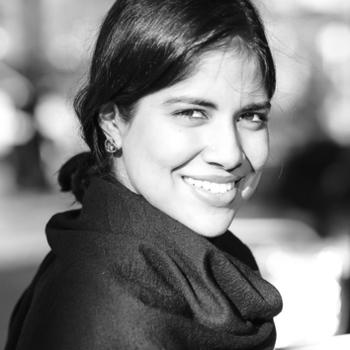 TRISHA URMI BANERJEE recently received her PhD in English from Harvard University. Her current book project theorizes the relation between the dorsal surface of the human body and fundamental narrative structures.
TRISHA URMI BANERJEE recently received her PhD in English from Harvard University. Her current book project theorizes the relation between the dorsal surface of the human body and fundamental narrative structures.
“My Heart Is Swimming …”
Heartfelt Musicking: The Physiology of a Bach Cantata
by Bettina Varwig
The essay begins:
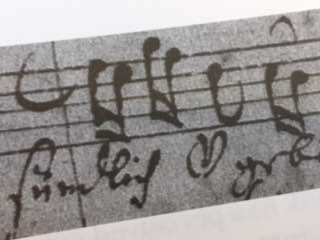 There is a notational oddity in the autograph score of Johann Sebastian Bach’s Cantata 199, “Mein Herze schwimmt im Blut” (My heart is swimming in blood). Instead of writing out the word “heart” every time it appears in the text, at several points the composer used the familiar heart symbol—not exactly shaped like the physical organ, but apparently as instantly recognizable then as it is now. In some instances, the abbreviation may have resulted from pragmatic considerations of space, but in others clearly not. Instead, perhaps Bach was invoking, in an inconsequential and semi-private manner, the rich significatory potential of this pictogram. Already by the early seventeenth century, the heart image had come to appear frequently in a variety of contexts, from courtly chivalry and religious iconography to sets of playing cards, encompassing an extensive field of associations and meanings. Severed from the human body, the organ could be subjected to a dazzling variety of treatments, as in the extraordinary Emblemata sacra (1622) by the German Lutheran theologian Daniel Cramer. In this widely distributed volume of devotional emblems, the heart appears in no fewer than fifty different scenarios, demonstrating its protean capacity to stand in for the believer’s life, soul, conscience, consciousness, memory, earthly existence, or inner self: the heart as a rock being softened by God’s hammer, a winged heart escaping from the claws of earthly demons up to heaven, the heart with a seeing eye, Jesus inscribing his name on the heart, the heart adrift in a stormy sea, a burning heart filled with cooling liquid from the Holy Spirit, the heart’s mettle being tested in a hot oven, and so on.
There is a notational oddity in the autograph score of Johann Sebastian Bach’s Cantata 199, “Mein Herze schwimmt im Blut” (My heart is swimming in blood). Instead of writing out the word “heart” every time it appears in the text, at several points the composer used the familiar heart symbol—not exactly shaped like the physical organ, but apparently as instantly recognizable then as it is now. In some instances, the abbreviation may have resulted from pragmatic considerations of space, but in others clearly not. Instead, perhaps Bach was invoking, in an inconsequential and semi-private manner, the rich significatory potential of this pictogram. Already by the early seventeenth century, the heart image had come to appear frequently in a variety of contexts, from courtly chivalry and religious iconography to sets of playing cards, encompassing an extensive field of associations and meanings. Severed from the human body, the organ could be subjected to a dazzling variety of treatments, as in the extraordinary Emblemata sacra (1622) by the German Lutheran theologian Daniel Cramer. In this widely distributed volume of devotional emblems, the heart appears in no fewer than fifty different scenarios, demonstrating its protean capacity to stand in for the believer’s life, soul, conscience, consciousness, memory, earthly existence, or inner self: the heart as a rock being softened by God’s hammer, a winged heart escaping from the claws of earthly demons up to heaven, the heart with a seeing eye, Jesus inscribing his name on the heart, the heart adrift in a stormy sea, a burning heart filled with cooling liquid from the Holy Spirit, the heart’s mettle being tested in a hot oven, and so on.
As the seat of life and the source of sin, the heart in the Christian tradition mediated between flesh and spirit. It could taste, sing, sigh, and melt; it could be given to God or cleaned out and inhabited by Christ. And so one might also imagine a heart “swimming in blood,” as the German poet Georg Christian Lehms wrote in his cantata libretto of 1711; a text set to music not only in 1714 by Bach but also two years before by his German contemporary Christoph Graupner, and subsequently heard by congregations in Weimar, Cöthen, Leipzig, and Darmstadt. Lehms’s poem draws on a long-standing Christian devotional tradition that conjoined hearts and bodily fluids, in visions of faithful hearts crying blood or sinners’ hearts drenched in waters of fear. But what was it like to be a body whose heart could undergo such procedures? What kind of physiology underpinned the veracity of these formulations? Simply casting them as poetic flights of fancy would mean disregarding the fundamentally embodied nature of such metaphors, which acquired their meaningfulness precisely through a more or less tangible link to a perceived corporeal reality. In heeding Gail Kern Paster’s call for an “interpretive literalism” in approaching early modern tropes based on bodily parts and functions, we might instead start from the assumption that experiences of seventeenth- and early eighteenth-century bodiliness were historically particular in such a way that they could give rise to this kind of imagery without too great a sense of rupture or alienation. If Lehms’s poetry strikes some present-day listeners as “repellent,” this response may exactly map out the distance to be traversed in order to recover those past modes of being-in-the-body that could produce and sustain such language.
Recuperating these historical forms of bodiliness has formed a key preoccupation of early modern scholarship at least since Thomas Csordas’s programmatic call in 1990 for a focus on “embodiment” in the study of human cultures, approaching the body less as a text to be deciphered than as the locus of lived experience. Of course, as Mark M. Smith has recently reminded us, any claims toward the recovery of a usable, consumable sensory past, potentially culminating in “lickable text, scratch-and-sniff pages, touch-and-feel pads” to convey an authentic historical experience to present-day readers, must be treated with extreme caution. My argument here, too, stays well clear of an attempt to recreate for current listeners any of those past corporeal habits of which a careful historical investigation might offer some glimpses; music already went through its own “authenticity” debate some decades ago, after all. Still, Bruce R. Smith’s invitation to “project ourselves into the historically reconstructed field of perception as far as we are able” can seem particularly intriguing in the case of music, since it not only encompasses the duality of presence and pastness in uniquely challenging ways but also ostensibly performs that effortless merger of sensation and meaning, both of which it produces in abundance, every time it sounds. Past musical practices and sound worlds in this sense offer an especially promising access point for a historical inquiry that aims to steer a course between the two extremes of positing the body either as pure presence or as mere representation.
In the early modern context, such an exercise in retro-projection initially requires a fundamental repositioning of the category of “body,” by which that post-Cartesian self- contained entity separate from the mind is refigured instead as “body-mind,” or, in Susan James’s terminology, “body-soul composite.” The wealth of physiological and psychological processes that constituted these body-souls comes into sharp focus when setting out to reconstruct the ways in which music acted upon or within them. Since the historical record is frustratingly slim with regard to actual flesh-and-blood listeners caught in the act, their experiences of engaging with music (in particular in the context of a worship service) are pieced together here from a range of theological, scientific, and musical sources chosen for their proximity to the German Lutheran milieu inhabited by Bach. If, as Daniel Chua has observed, by the middle of the eighteenth century music would by and large come to be understood as only that which is heard, it is this later reduction to the acoustic that needs to be reversed (unthought and unfelt) in order to recapture how music’s sounding materials reverberated not only through “throats, mouths, lungs, ears, and heads” but also through hearts, guts, and limbs, as well as spirits and souls. Although the study of music as a performed, sounding activity has recently become something of a new orthodoxy within musicology, and this focus on performance has made the bodies behind (or, rather, in) music more immediately tangible, those bodies are still in need of much more nuanced historicization. Like James Q. Davies in his recent study of nineteenth-century virtuosity, I suggest that acts of musicking, in their capacity not just to reflect but to generate particular modes of inhabiting the body, offer a hitherto underused resource in coming to grips with the animate bodies of the past. What I envisage, then, is a kind of somatic archaeology that pushes Elizabeth Le Guin’s proposal of a “carnal musicology” to a new level of fleshliness. Such an approach might thereby begin to address that “huge gap in early modern sensory history” to which Penelope Gouk has recently alerted us, moving toward a radically revised, somatic ontology of early modern music making. Continue reading …
This essay proposes a somatic archaeology of German Lutheran music making around 1700. Focusing on a single cantata by Johann Sebastian Bach, it sets out to reconstruct the capacities of early modern body-souls for musical reverberation, affective contagion, and spiritual transformation.
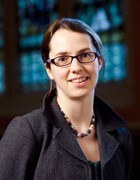 BETTINA VARWIG is Lecturer in Music and Fellow of Emmanuel College at the University of Cambridge. She is the author of Histories of Heinrich Schütz (Cambridge University Press, 2011) and is currently working on a book project entitled An Early Modern Musical Physiology.
BETTINA VARWIG is Lecturer in Music and Fellow of Emmanuel College at the University of Cambridge. She is the author of Histories of Heinrich Schütz (Cambridge University Press, 2011) and is currently working on a book project entitled An Early Modern Musical Physiology.
Translation/Transduction at Berkeley
Sawyer Seminar on Linguistic Anthropology and Literary and Cultural Studies: Translation/Transduction
This first of seven two-day seminars exploring the potential of a set of concepts, tools, and critical practices developed in the field of linguistic anthropology for work being done in the fields of literary and cultural criticism takes place Wednesday and Thursday, September 12 and 13, from 5-7 pm in 370 Dwinelle Hall, UC Berkeley. With presentations by Susan Gal (Chicago) and Elliott Colla (Georgetown) on September 12, and by Mairi McLaughlin (Berkeley), Saul Schwartz (Berkeley), and Toby Warner (Davis) on September 13. For information on the seminar’s working group and background readings, please contact Michael Lucey (mlucey@berkeley.edu) or Tom McEnaney (tmc@berkeley.edu).

